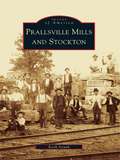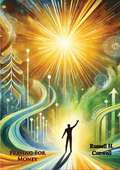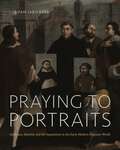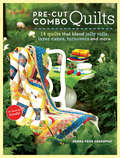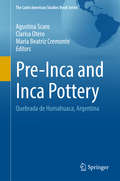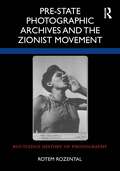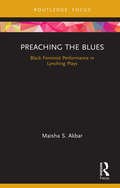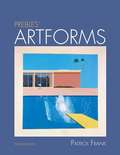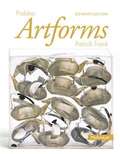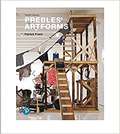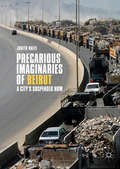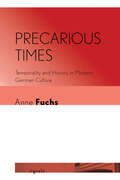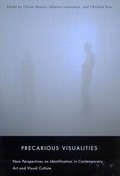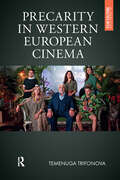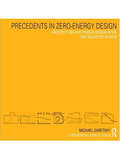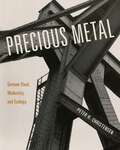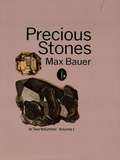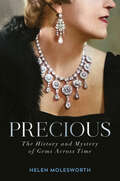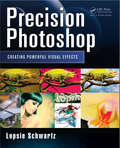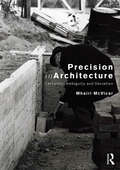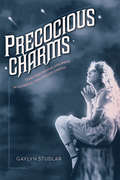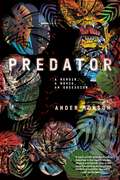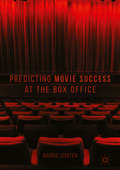- Table View
- List View
Prallsville Mills and Stockton
by Keith StrunkThe Delaware River Valley has attracted industrial and political visionaries, thinkers, and artists for more than 300 years. In its taverns, political discourse fanned the flames of revolution, and its beauty has inspired artists, actors, and writers from Edward Hicks to Richard Rodgers to Dorothy Parker. In 1794, John Prall Jr. acquired a property nestled next to the river that included a corn or gristmill and a sawmill. The mills became the heart of Prallsville, a village industrial complex that would continue to function into the early 20th century. Early economic and community needs closely linked Prallsville to neighboring Brookville and Stockton, and in 1898, they incorporated to become Stockton. The vintage images in Prallsville Mills and Stockton provide a glimpse of the tenacious and generous people that survived floods, fires, and industrial mishaps to prosper in their home along the banks of the Delaware.
Praying For Money
by Russell H. ConwellIn "Praying for Money," Russell H. Conwell, the esteemed Baptist minister, lawyer, and founder of Temple University, explores the transformative power of prayer in achieving financial prosperity. This insightful book delves into the spiritual principles and ethical considerations of seeking wealth through prayer, offering readers a balanced perspective on integrating faith with financial success.Conwell argues that praying for money is not inherently materialistic when approached with the right intentions. Instead, it can be a powerful tool for aligning one's financial goals with a higher purpose, fostering both personal growth and the ability to contribute positively to the world.Key themes include:The Power of Positive Prayer: Conwell explains how sincere, focused prayer can align one’s intentions with divine will, opening doors to opportunities and financial blessings. He offers practical tips on cultivating a prayerful mindset and approaching financial goals with faith and confidence.Aligning Wealth with Purpose: Emphasizing the importance of ethical wealth creation, Conwell encourages readers to seek financial success not for selfish reasons but to fulfill their potential and help others. He argues that wealth gained through integrity and hard work is more fulfilling and sustainable.Overcoming Limiting Beliefs: The book addresses common misconceptions about money and spirituality, urging readers to overcome mental barriers and embrace the idea that financial success and spiritual growth can coexist harmoniously.Whether you are a person of faith looking to enhance your financial situation, a seeker of spiritual growth, or simply interested in the intersection of wealth and spirituality, "Praying for Money" provides practical wisdom and inspiration. Conwell’s timeless teachings encourage readers to view financial success as a means to achieve greater good and fulfill their divine purpose.
Praying to Portraits: Audience, Identity, and the Inquisition in the Early Modern Hispanic World
by Adam JasienskiIn Praying to Portraits, art historian Adam Jasienski examines the history, meaning, and cultural significance of a crucial image type in the early modern Hispanic world: the sacred portrait. Across early modern Spain and Latin America, people prayed to portraits. They prayed to “true” effigies of saints, to simple portraits that were repainted as devotional objects, and even to images of living sitters depicted as holy figures. Jasienski places these difficult-to-classify image types within their historical context. He shows that rather than being harbingers of secular modernity and autonomous selfhood, portraits were privileged sites for mediating an individual’s relationship to the divine. Using Inquisition records, hagiographies, art-theoretical treatises, poems, and plays, Jasienski convincingly demonstrates that portraiture was at the very center of broader debates about the status of images in Spain and its colonies.Highly original and persuasive, Praying to Portraits profoundly revises our understanding of early modern portraiture. It will intrigue art historians across geographical boundaries, and it will also find an audience among scholars of architecture, history, and religion in the early modern Hispanic world.
Pre-Cut Combo Quilts: 14 Quilts That Blend Jelly Rolls, Layer Cakes, Turnovers and More
by Debra GreenwayCombine Your Favorite Pre-Cut Fabrics to Make 14 Gorgeous Quilts! Discover a world of exciting design possibilities by blending different types and sizes of pre-cut fabrics to create stunning quilts in less time. With instructions for 14 quilts and 5 variations, you'll be inspired to start sewing with your favorite fabric lines and pre-cut stash. As a bonus, each pattern is also fat quarter friendly, featuring instructions on how to use fat quarters instead of pre-cut fabrics to make each project. Inside, you'll find: 14 quilts and 5 variations featuring standard piecing as well as applique and paper piecing Optional fat quarter cutting instructions for each quilt Clear diagrams and detailed instructions that make sewing easy An inspiration gallery to spark your own creative designs With the lush selection of pre-cut fabrics available, you'll love combining your favorite colors and cuts to make Pre-Cut Combo Quilts!
Pre-Inca and Inca Pottery
by Agustina Scaro Clarisa Otero Maria Beatriz CremonteThis volume presents a collection of articles which offer different perspectives for archaeological pottery studies, regarding the understanding of pre-Hispanic social practices in Quebrada de Humahuaca, Argentina. The aim of this volume is to contribute to Quebrada de Humahuaca archaeological knowledge and its inclusion in current discussions about Andean and worldwide history of pottery production. In 2003, Quebrada de Humahuaca was made a UNESCO World Heritage Site. Numerous tracks, roads and settlements testify to its pre-Hispanic and post pre-Hispanic history from pre-ceramic to colonial times. Due to its strategic position Quebrada de Humahuaca has been colonized by both the Inca and the Spaniards. It also has been a stage for many battles of the Argentine War of Independence. The richness and abundance of ceramic material evidence in the landscape of the Quebrada de Humahuaca has provided archaeologists information about human behaviour and social practices both in every and ritual activities. Quebrada de Humahuaca, in the province of Jujuy (the northernmost sector of Argentina) is one of the most widely recognized archaeological zones and one of the most widely studied. Through extensive excavations of the most conspicuous settlements, archaeologists managed to characterize these pre-Hispanic agricultural societies and construct chronologies of northwestern Argentina, and to elaborate models of trans-Andean population dynamics.
Pre-State Photographic Archives and the Zionist Movement (Routledge History of Photography)
by Rotem RozentalBy entering and critically re-activating the Zionist photographic archive established by the Division of Journalism and Propaganda of the Jewish National Fund, this research examines its rippling impact on civil landscapes prior to 1948 in Palestine, and its lasting impact on the region to date. This study argues that the Zionist movement makes particular use of the machinery of the photographic archive, aiming to constitute the boundaries of Palestine as a Jewish state, claiming ownership over the land and announcing internationally the success of its enterprise, thus substantiating the image it sought to embed as the “reality” of the land. This archive was not stand-alone, as it was functioning in relation to a vast, complicated network of organizational systems and technologies, in the Middle East and across the world. Crucially, this system functioned as a national archive in future tense, for a nation-state that was not yet in existence, seeking to substantiate its regional authority and shape its cultural repository, outlining parameters for inclusion and exclusion from its civic space. The book will be of interest to scholars working in art history, photography history, visual culture, Jewish studies, Israel studies and Middle East studies.
Preaching the Blues: Black Feminist Performance in Lynching Plays (Routledge Advances in Theatre & Performance Studies)
by Maisha S. AkbarPreaching the Blues: Black Feminist Performance in Lynching Plays examines several lynching plays to foreground black women’s performances as non-normative subjects who challenge white supremacist ideology. Maisha S. Akbar re-maps the study of lynching drama by examining plays that are contingent upon race-based settings in black households versus white households. She also discusses performances of lynching plays at Historically Black Colleges and Universities (HBCUs) in the South and reviews lynching plays closely tied to black school campuses. By focusing on current examples and impacts of lynching plays in the public sphere, this book grounds this historical form of theatre in the present day with depth and relevance. Of interest to scholars and students of both general Theatre and Performance Studies, and of African American Theatre and Drama, Preaching the Blues foregrounds the importance of black feminist artists in lynching culture and interdisciplinary scholarship.
Prebles' Artforms
by Duane Preble Sarah Preble Patrick L. FrankPrebles' Artforms continues to lead the field with its steadfast focus on contemporary art, global artists, and cutting edge technology for the art appreciation classroom. We form Art. Art forms us. The title of this book has a dual meaning. Besides the expected discussion of the various forms of art, the title also reflects the fact that art does indeed help to form us as people. As we create forms, we are in turn formed by what we have created. Several years ago, the title was changed to Prebles' Artforms, acknowledging the pioneering contribution of the original authors, Duane and Sarah Preble, to the study of art. Their vision and spirit have touched hundreds of thousands of students who have studied this book. Artforms grew out of a desire to introduce art through an engaging visual experience, and to expose students to a culturally diverse canon of work. It is written and designed to help readers build an informed foundation for individual understanding and enjoyment of art. By introducing art theory, practice, and history in a single volume, this book aims to draw students into a new or expanded awareness of the visual arts. Beyond fostering appreciation of major works of art, this book's primary concern is to open students' eyes and minds to the richness of the visual arts as unique forms of human communication and to convey the idea that the arts enrich life best when we experience, understand, and enjoy them as integral parts of the process of living.
Prebles' Artforms
by Patrick Frank Duane Preble Sarah PrebleWe form art. Art forms us. The title of this book has a dual meaning. As humans form works of art, we are in turn formed by what we create. The art world constantly evolves, as today’s artists interpret, challenge, and ultimately create the world around them. The 11th edition of Prebles’ Artforms reflects this dynamic environment; it is one of the most exhaustive revisions in the book’s history. Three recent trends drive this edition: changing pedagogical needs, new scholarly research, and recent creativity by artists around the world.
Prebles' Artforms
by Patrick FrankWe form art. Art forms us. The title of this book has a dual meaning. As humans form works of art, we in turn are formed by what we have created. Such human creativity influences and stimulates us. Several editions ago, this book's title was changed to Prebles' Artforms, acknowledging the pioneering contribution of the original authors, Duane and Sarah Preble. They first posited the emphasis on our two-way interaction with works of art, and that emphasis continues to inform every page of this book. Why study art? Because artists have dealt at one time or another with nearly every aspect of the human experience, from the common to the forbidden, the mundane to the sacred, the repugnant to the sublime. Artistic creativity is a response to being alive, and by experiencing such creativity, we enrich our experience of life. Behind all of the learning objectives, new terms, quizzes, flashcards, and writing prompts that accompany this book, there is a wealth of visual creativity that has constantly informed, surprised, inspired, challenged, or thrilled by Patrick Frank.
Precarious Imaginaries of Beirut
by Judith NaeffThis book investigates a shared experience of time and space in the post-civil-war city of Beirut: "the suspended now". Based on the close analysis of a large corpus of cultural objects; including visual art, literature, architecture and cinema; the book argues that last decades have witnessed a gradual shift in understanding this temporality from being a transitional phase to a more durable experience of precariousness. The theoretically rich analyses take us on a journey through Beirut's real and imagined geographies, from garbage dumps to real estate advertisements, and from subterranean spaces to martyr's posters. For scholars of cultural analysis, urban studies, cultural geography and critical theory, the case of post-1990 Beirut offers a fascinating case of neoliberal urban renewal, which challenges existing theories. For scholars of Lebanon and Beirut, this study complements existing work on post-civil-war Lebanese cultural production rooted in trauma studies by its focus on the city's continual exposure to violence.
Precarious Times: Temporality and History in Modern German Culture (Signale: Modern German Letters, Cultures, and Thought)
by Anne FuchsIn Precarious Times, Anne Fuchs explores how works of German literature, film, and photography reflect on the profound temporal anxieties precipitated by contemporary experiences of atomization, displacement, and fragmentation that bring about a loss of history and of time itself and that is peculiar to our current moment.The digital age places premiums on just-in-time deliveries, continual innovation, instantaneous connectivity, and around-the-clock availability. While some celebrate this 24/7 culture, others see it as profoundly destructive to the natural rhythm of day and night—and to human happiness. Have we entered an era of a perpetual present that depletes the future and erodes our grasp of the past?Beginning its examination around 1900, when rapid modernization was accompanied by comparably intense reflection on changing temporal experience, Precarious Times provides historical depth and perspective to current debates on the "digital now." Expanding the modern discourse on time and speed, Fuchs deploys such concepts as attention, slowness and lateness to emphasize the uneven quality of time around the world.
Precarious Visualities
by Johanne Lamoureux Christine Ross Olivier AsselinThrough the study of exemplary media works and practices - photography, film, video, performance, installations, web cams - scholars from various disciplines call attention to the unsettling of identification and the disablement of vision in contemporary aesthetics. To look at an image that prevents the stabilization of identification, identity and place; to perceive a representation that oscillates between visibility and invisibility; to relate to an image which entails a rebalancing of sight through the valorization of other senses; to be exposed, through surveillance devices, to the gaze of new figures of authority - the aesthetic experiences examined here concern a spectator whose perception lacks in certainty, identification, and opticality what it gains in fallibility, complexity, and interrelatedness. Precarious Visualities provides a new understanding of spectatorship as a relation that is at once corporeal and imaginary, and persistently prolific in its cultural, social, and political effects. Contributors include Raymond Bellour (École des hautes études en sciences sociales), Monika Kin Gagnon (Concordia University), Beate Ochsner (University of Mannheim -Universität Mannheim), Claudette Lauzon (McGill University), David Tomas (Université du Québec à Montréal), Slavoj Zizek (Ljubljiana University and University of London), Marie Fraser (Université du Québec à Montréal), Alice Ming Wai Jim (Concordia University), Julie Lavigne (Université du Québec à Montréal), Amelia Jones (University of Manchester), Eric Michaud (École des hautes études en sciences sociales), Hélène Samson (McCord Museum), and Thierry Bardini (Université de Montréal).
Precarious Visualities: New Perspectives on Identification in Contemporary Art and Visual Culture
by Johanne Lamoureux Christine Ross Olivier AsselinThrough the study of exemplary media works and practices - photography, film, video, performance, installations, web cams - scholars from various disciplines call attention to the unsettling of identification and the disablement of vision in contemporary aesthetics. To look at an image that prevents the stabilization of identification, identity and place; to perceive a representation that oscillates between visibility and invisibility; to relate to an image which entails a rebalancing of sight through the valorization of other senses; to be exposed, through surveillance devices, to the gaze of new figures of authority - the aesthetic experiences examined here concern a spectator whose perception lacks in certainty, identification, and opticality what it gains in fallibility, complexity, and interrelatedness. Precarious Visualities provides a new understanding of spectatorship as a relation that is at once corporeal and imaginary, and persistently prolific in its cultural, social, and political effects. Contributors include Raymond Bellour (École des hautes études en sciences sociales), Monika Kin Gagnon (Concordia University), Beate Ochsner (University of Mannheim -Universität Mannheim), Claudette Lauzon (McGill University), David Tomas (Université du Québec à Montréal), Slavoj Zizek (Ljubljiana University and University of London), Marie Fraser (Université du Québec à Montréal), Alice Ming Wai Jim (Concordia University), Julie Lavigne (Université du Québec à Montréal), Amelia Jones (University of Manchester), Eric Michaud (École des hautes études en sciences sociales), Hélène Samson (McCord Museum), and Thierry Bardini (Université de Montréal)."
Precarity in Western European Cinema (Film Culture in Transition)
by Temenuga TrifonovaThis book explores the new European cinema of precarity, with a particular focus on Western European films, by revisiting some of its most important precursors, including 1930s Popular Front films and 1990s French New Realism, Italian neorealism, and the British New Wave. It identifies dominant themes and motifs in contemporary films and their precursors, as well as important continuities and discontinuities between earlier and later representations of work, class, class struggle, solidarity, precarity, the moral economy of capitalism and neoliberalism and their affective pathologies. Trifonova examines the ways in which the cinema of precarity mediates economic and social capital in the age of neoliberalism and considers whether these films lend validity to Guy Standing’s idea of the precariat as “the new dangerous class.”
Precedents in Architecture
by Roger H. Clark Michael PauseA timely update of the architectural classic on design analysisPrecedents in Architecture, Fourth Edition provides a vocabulary for architectural analysis that illuminates the works of leading architects and aids architects and designers in creating their own designs.Thirty-eight leading architects are represented in this updated edition through an analysis of more than 100 buildings that are assessed using a diagrammatic technique applicable to any building. This impressive collection includes fourteen new buildings and seven new, innovative architects distinguished by the strength, quality, and interest of their designs. It delivers valuable guidance in analyzing architectural history as an evolutionary process by exploring the commonality of design ideas reflected in a broad range of structures by internationally renowned architects.Both novices and seasoned professionals will find Precedents in Architecture, Fourth Edition to be a very useful tool for enriching their design vocabulary and for the ongoing assessment of buildings found in today's evolving landscape.
Precedents in Zero-Energy Design: Architecture and Passive Design in the 2007 Solar Decathlon
by Michael Zaretsky‘Michael Zaretsky’s Precedents in Zero-Energy Design is such an important book … it will help readers recognize that design comes before technology – and renewable energy systems alone can’t solve the problems we face’ – John D. Quale, Assistant Professor of Architecture and ecoMOD Project Director, University of Virginia The world is currently facing an environmental crisis and as anyone interested in sustainable or zero-energy design knows the design and building industries have the potential to significantly reduce greenhouse gas emissions across the globe. The Solar Decathlon is an international event in which universities from around the world compete in the design and construction of a one-bedroom, zero-energy house. This book provides an in-depth, yet accessible analysis of the architecture and passive design strategies of the houses in the 2007 Solar Decathlon. These houses are the result of thousands of hours of research and development from twenty universities around the world. Divided into three parts, the book provides: an initial section investigating the architecture, passive design and systems layout of the twenty houses; a diagrammatic comparison of the architecture and passive design characteristics of each of the twenty houses in order of ranking by the Architecture, Comfort Zone and overall scores received in the competition; a deep analysis of the relationship between architecture, passive design and mechanical systems design as compared to the rankings received in the various contests. This analysis considers the decisions made by the competing teams and highlights the success of the design strategies employed. Students, educators, practitioners and researchers of architecture, design and engineering will find this an informative and inspirational book. It examines the relationship between design and environmental principles and provides invaluable insight into some of the most innovative, off-the-grid and zero-energy houses in the world. With a Foreword by John D. Quale, Assistant Professor of Architecture and ecoMOD Project Director, University of Virginia
Precious Metal: German Steel, Modernity, and Ecology
by Peter H. ChristensenWith its incorporation into architecture on a grand scale during the long nineteenth century, steel forever changed the way we perceive and inhabit buildings. In this book, Peter H. Christensen shows that even as architects and engineers were harnessing steel’s incredible properties, steel itself was busy transforming the natural world.Precious Metal explores this quintessentially modernist material—not for the heroic structural innovations it facilitated but for a deeper understanding of the role it played in the steady change of the earth. Focusing on the formative years of the architectural steel economy and on the corporate history of German steel titans Krupp and Thyssen, Christensen investigates the ecological interrelationship of artificial and natural habitats, mediated by steel. He traces steel through six distinct phases: birth, formation, display, dispersal, construction, and return. By following the life of steel from the collection of raw minerals to the distribution and disposal of finished products, Christensen challenges the traditional narrative that steel was simply the primary material responsible for architectural modernism.Based on the premise that building materials are as much a part of the natural world as they are of a building, this groundbreaking book rewrites an important chapter of architectural history. It will be welcomed by specialists in architectural history, nineteenth-century studies, environmental history, German studies, modernist studies, and the Anthropocene.
Precious Stones, Vol. 1
by Max BauerThis classic study begins with a general analysis of precious stones followed by descriptions of their cutting and mounting and the ways in which their value and authenticity are assessed. The remainder of this volume focuses on the diamond: its characteristics; its natural occurrences and artificial production; and its use in jewelry. 52 figures.
Precious: The History and Mystery of Gems Across Time
by Helen MolesworthA renowned jewelry expert recounts her career working with nature&’s most extraordinary treasures—gemstones—and traces these rare jewels from ancient Egyptian records through the high-stakes auctions of today.Helen Molesworth has been captivated by precious stones since early childhood but she struggled to join the gemstone industry, having no connections to the few family-run companies that have dominated the field for centuries. She persevered, and more than two decades later, Molesworth is now an international authority hired to appraise the extraordinary jewelry of such clients as the British royal family. Precious is packed with inside stories about fabulous jewels associated with generations of celebrities, from Cleopatra (emerald) to Catherine, Princess of Wales (sapphire); from Marilyn Monroe (pearl) to Beyoncé (garnet); from Jackie O (pearl) to Lady Gaga (diamond); and from Marie Antoinette (pearl) to Elizabeth Taylor (pearl, ruby, and emerald)! As Molesworth tells it, the history of gemstones is the history of humanity. And so she journeys the world, navigating African diamond mines, Colombian emerald mines, and the sapphire-rich rivers of Sri Lanka to study gems at their source. She has selected ten of nature&’s most dazzling gems, tracing their discovery to when these cut-and-polished masterpieces first adorned empresses and kings. From the stories of a priceless emerald watch hidden under floorboards for centuries to the common quartz fashioned into world-famous royal jewels, and diamonds selling for multi-millions, Precious is not just a chronicle of archeology and geology, high society and high finance, it&’s the story of our timeless ambition to make—and wear—something beautiful.
Precision Photoshop: Creating Powerful Visual Effects
by Lopsie SchwartzThe Essentials of Photoshop for Creative ProfessionalsThere are plenty of books on Photoshop for photographers; for everyone else, there's Precision Photoshop: Creating Powerful Visual Effects. In clear, conversational language using extensive images and screenshots, this book gives you in-depth guidance on learning how to use Photoshop. The author
Precision in Architecture: Certainty, Ambiguity and Deviation
by Mhairi McVicarThis book offers a detailed insight into the desire for, and consequences of, precise communications in the daily life of contemporary architectural practice through close readings of constructed architectural details by Sigurd Lewerentz, Caruso St John Architects, Mies van der Rohe and OMA. In the professionalised context of the contemporary architectural profession, precise communications – drawings, specifications, letters, faxes and emails – are charged with the complex task of translating architectural intent into a neutral and quantifiable language which is expected to guarantee an exact match between the architects’ intentions and the constructed result. Yet, as any architectural practitioner will know, it is doubtful whether the construction of any architectural project may ever exactly match all written and drawn predictions. This book challenges claims to certainty which have been attributed to such communications from the mid-nineteenth century onwards, and critiques ongoing expectations of certainty in contemporary architectural production.
Precocious Charms
by Gaylyn StudlarIn Precocious Charms, Gaylyn Studlar examines how Hollywood presented female stars as young girls or girls on the verge of becoming women. Child stars are part of this study but so too are adult actresses who created motion picture masquerades of youthfulness. Studlar details how Mary Pickford, Shirley Temple, Deanna Durbin, Elizabeth Taylor, Jennifer Jones, and Audrey Hepburn performed girlhood in their films. She charts the multifaceted processes that linked their juvenated star personas to a wide variety of cultural influences, ranging from Victorian sentimental art to New Look fashion, from nineteenth-century children's literature to post-World War II sexology, and from grand opera to 1930s radio comedy. By moving beyond the general category of "woman," Precocious Charms leads to a new understanding of the complex pleasures Hollywood created for its audience during the half century when film stars were a major influence on America's cultural imagination. how classic Hollywood cinema constructed gender and sexuality beyond the general category of "woman," leading to a new understanding of how Hollywood spoke to and created pleasures for its audiences from the 1910s into the 1960s.
Predator: A Memoir, a Movie, an Obsession
by Ander MonsonA searching memoir of a life lived in the flicker of an action film, by the author of I Will Take the Answer In his first memoir, Ander Monson guides readers through a scene-by-scene exploration of the 1987 film Predator, which he has watched 146 times. Some fighters might not have time to bleed, but Monson has the patience to consider their adventure, one frame at a time. He turns his obsession into a lens through which he poignantly examines his own life, formed by mainstream, white, male American culture. Between scenes, Monson delves deeply into his adolescence in Michigan’s Upper Peninsula and Riyadh, his role as a father and the loss of his own mother, and his friendships with men bound by the troubled camaraderie depicted in action and sci-fi blockbusters. Along with excursions into the conflicted pleasures of cosplay and first-person shooters, he imagines himself beside the poet and memoirist Paul Monette, who wrote the novelization of the movie while his partner was dying of AIDS.A sincere and playful book that lovingly dissects the film, Predator also offers questions and critiques of masculinity, fandom, and their interrelation with acts of mass violence. In a stirring reversal, one chapter exposes Monson through the Predator’s heat-seeking vision, asking him, “What do you know about the workings of the hidden world?” As Monson brings us into the brilliant depths of the film and its universe, the hunt begins.
Predicting Movie Success at the Box Office
by Barrie GunterThis book explores the different factors that can influence a new movie’s prospects at the box office. Looking at factors such as the production budget, distribution model, genre, stars and audience reactions of films, Gunter asks how such aspects may reduce the uncertainties of success so common in the movie industry. The reader is taken on a journey through filmmaking factors that, research suggests, impact box office performance. While box office revenues represent only part of a movie’s earning potential, Gunter highlights how theatrical performances remain central to what the movie business is about. The chapters illustrate how ticket sales are largely influenced by the production budget but also cultural differences and new movie platforms.
